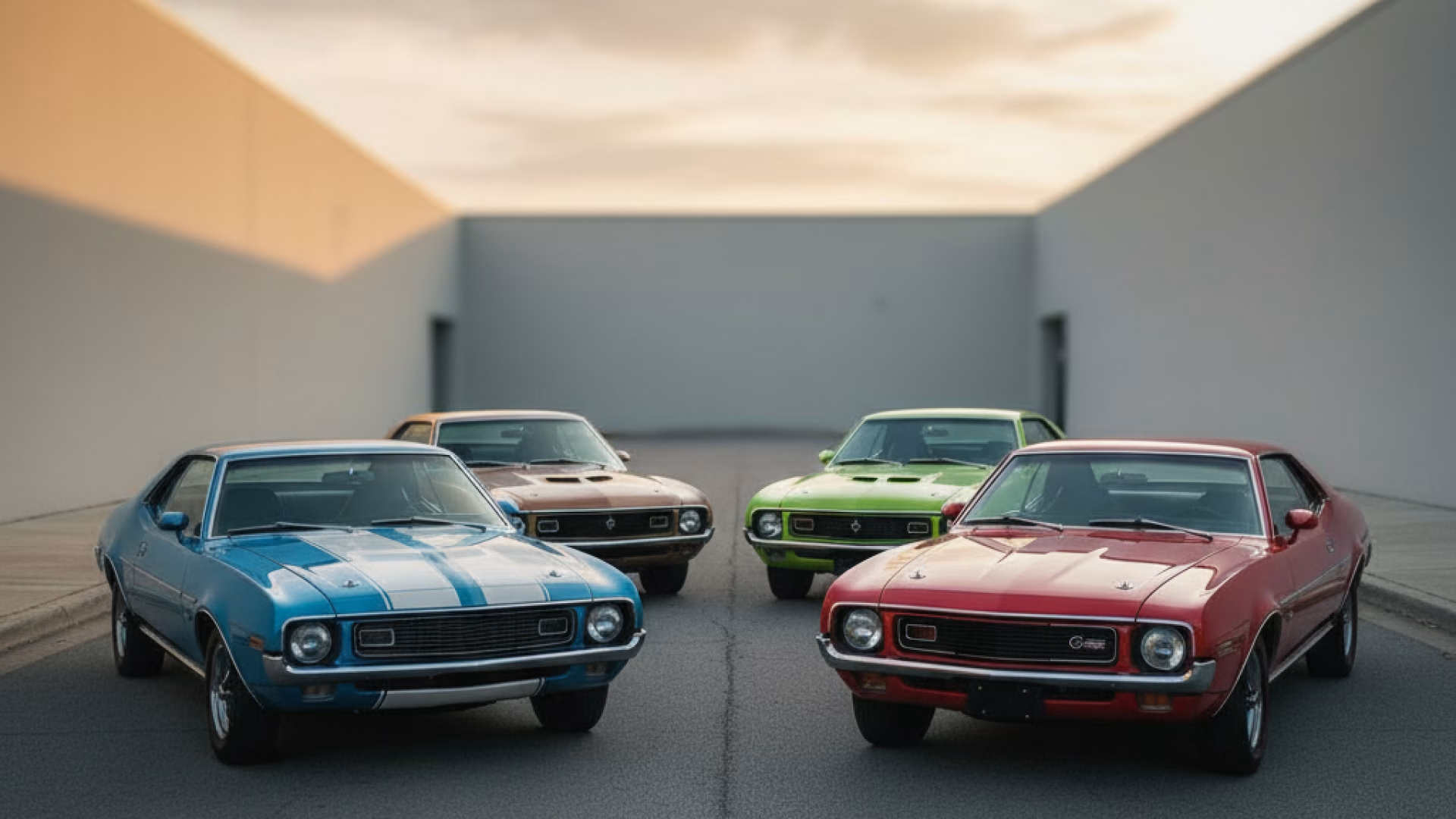AMC: A Legacy of Innovation and the Spirit of the Underdog
American Motors Corporation, universally known as AMC, holds a unique and beloved place in the history of the American automobile. As the perennial underdog, AMC was the "David" to the "Goliaths" of GM, Ford, and Chrysler. Unable to compete on sheer volume, AMC survived and often thrived by being more clever, more innovative, and more daring. The brand became famous for its quirky designs, its pioneering work in new market segments, and its potent, often underrated, muscle cars. Though the brand was officially dissolved in 1988 after its acquisition by Chrysler, its legacy as a feisty and innovative independent automaker endures.
The Genesis: The Largest Corporate Merger of its Time
American Motors Corporation was formed in 1954 through the merger of two existing independent automakers: Nash-Kelvinator Corporation and Hudson Motor Car Company. This was the largest corporate merger in U.S. history at the time. Headquartered in Kenosha, Wisconsin, USA, the new company, led by George W. Mason, aimed to create a strong third force that could effectively compete with the "Big Three."
Core Philosophy: Innovation Through Necessity
AMC's core philosophy was born from necessity. Lacking the massive budgets of its rivals, the company couldn't afford to compete head-to-head in every segment. Instead, it focused on creating new ones and offering features that the bigger companies overlooked. Key pillars of this philosophy included:
- Compact Car Leadership: AMC was a pioneer in the American compact car market with models like the Rambler, offering economical and practical alternatives to the giant sedans of the era.
- Pragmatic Innovation: AMC was famous for clever, cost-effective innovations, such as being one of the first automakers to offer standard air conditioning and creating the industry's first unibody-construction car (the Nash 600).
- A Different Kind of Performance: While a small player, AMC jumped into the muscle car wars with a unique, high-performance identity, offering powerful V8s in its lighter, more nimble cars.
Defining Moments and Iconic Achievements
AMC's history is a highlight reel of unique, memorable, and often groundbreaking vehicles.
- The Rambler Scrambler (1969): A wild, red-white-and-blue compact muscle car, the Rambler Scrambler is considered by many to be one of the first true "factory hot rods" and an icon of the era.
- The AMX and Javelin: The two-seat AMX was a unique, short-wheelbase muscle car that offered Corvette-like performance at a lower price. The Javelin was its four-seat pony car sibling that successfully competed against the Mustang and Camaro on the Trans-Am racing circuit.
- The Eagle 4x4 (1980): The AMC Eagle was a revolutionary vehicle, arguably the world's first true "crossover." AMC took a standard passenger car body (the Concord) and mounted it on a raised, 4-wheel-drive platform. This blend of car-like comfort and SUV-like capability was decades ahead of its time.
- The Acquisition of Jeep: In 1970, AMC made the brilliant move to purchase Kaiser-Jeep, acquiring the legendary Jeep brand. It was AMC's development and marketing of the CJ and the revolutionary unibody Cherokee (XJ) that laid the groundwork for Jeep's modern success.
The End of an Era and AMC's Lasting Legacy
After a tumultuous period and a partnership with Renault, the remaining assets of AMC, primarily the highly profitable Jeep brand, were acquired by Chrysler Corporation in 1987. The AMC brand was officially phased out shortly after, with the last AMC-branded vehicle, the Eagle Wagon, produced in 1988.
Why AMC Still Matters
Despite its absence, AMC's legacy is incredibly important. The brand is a testament to American ingenuity and the spirit of the underdog. It proved that a smaller company could innovate and create iconic, desirable vehicles. Classic Javelins, AMXs, and Eagles are now highly prized by collectors who appreciate their unique story and styling. For those seeking a classic American car with a ton of character and a history of daring to be different, a used AMC is a direct link to a bygone but celebrated era of automotive history.
